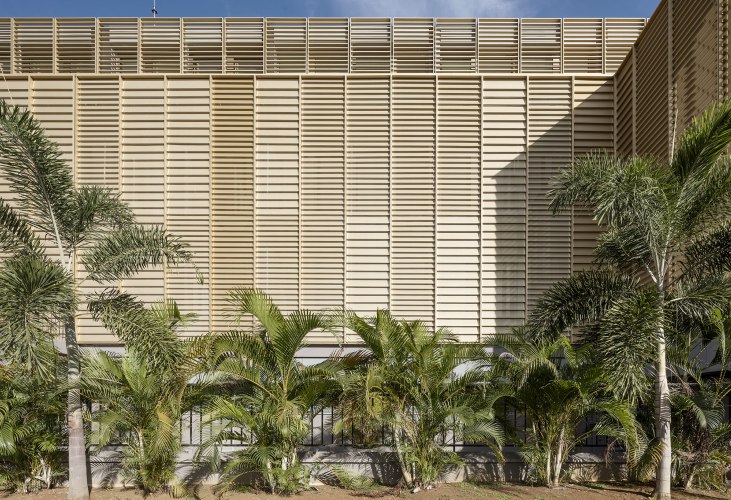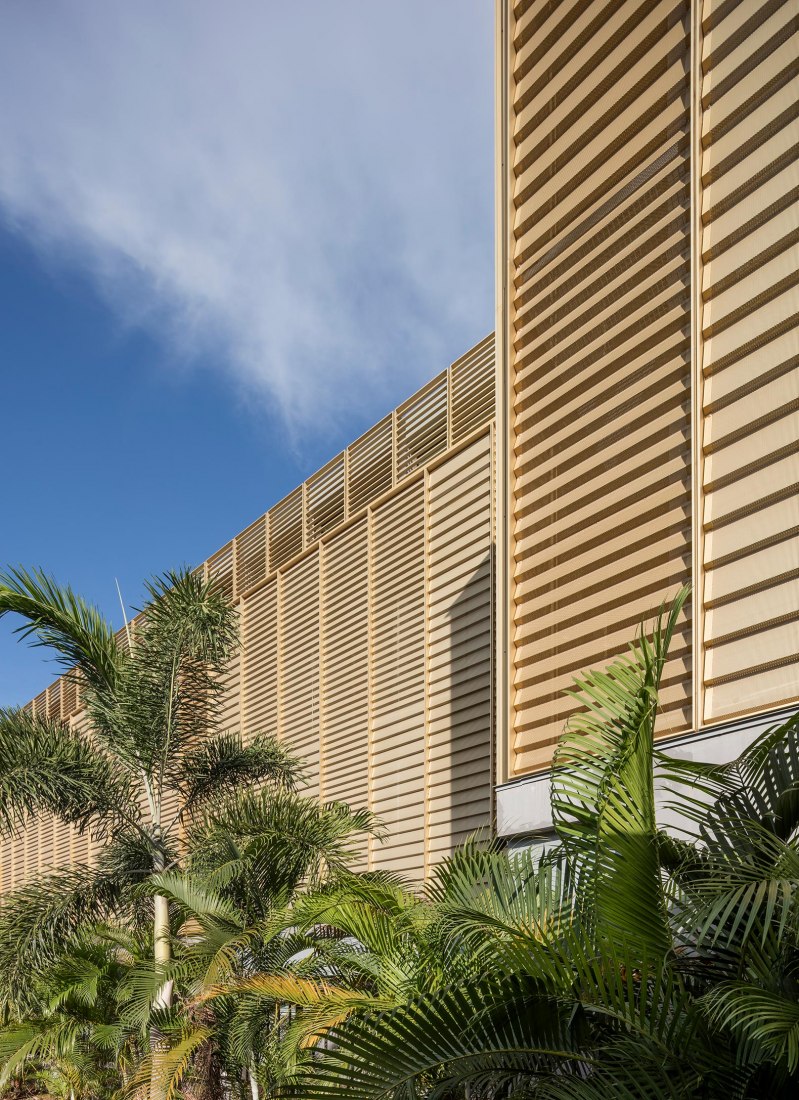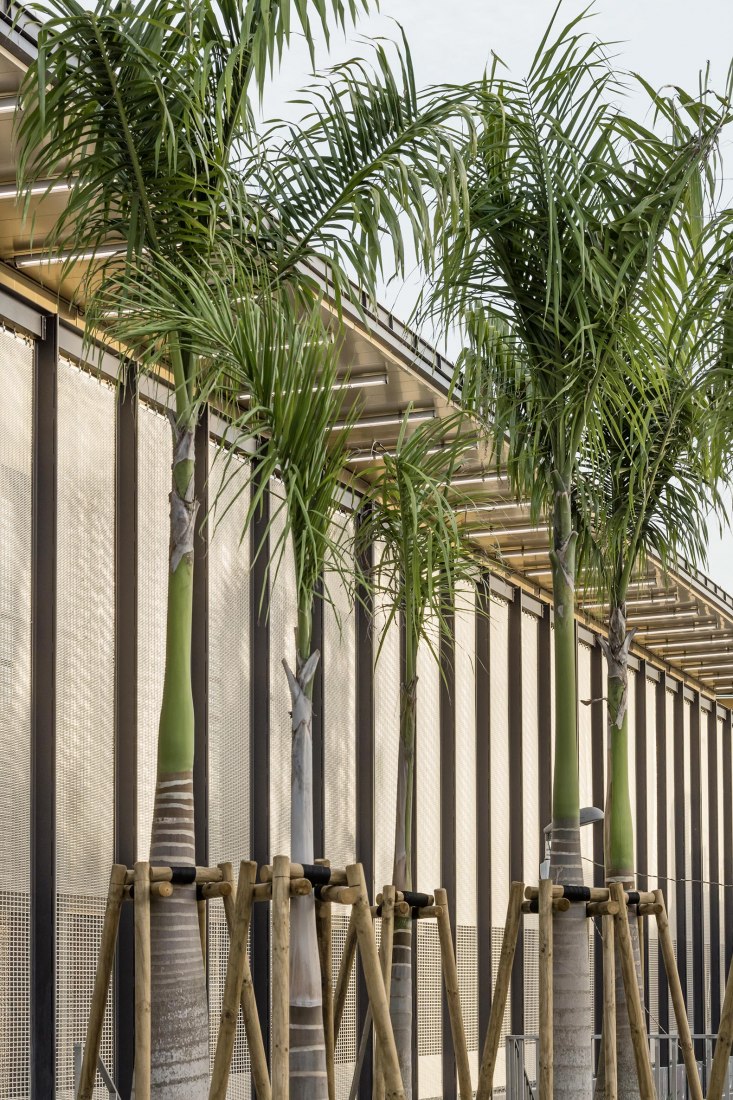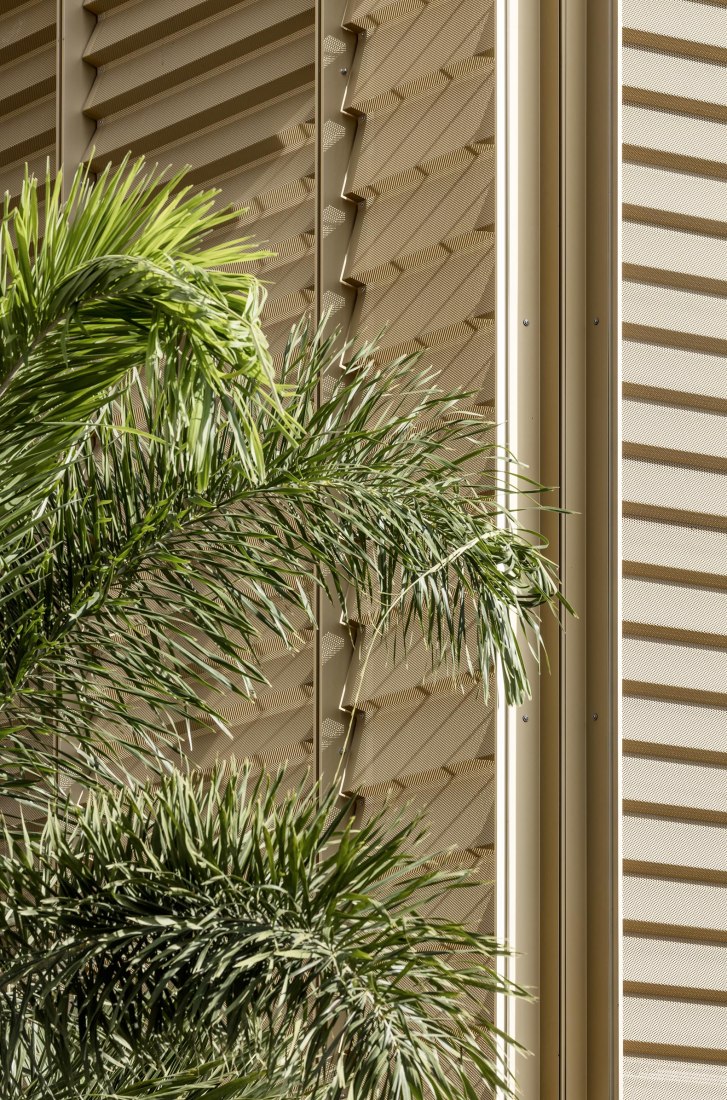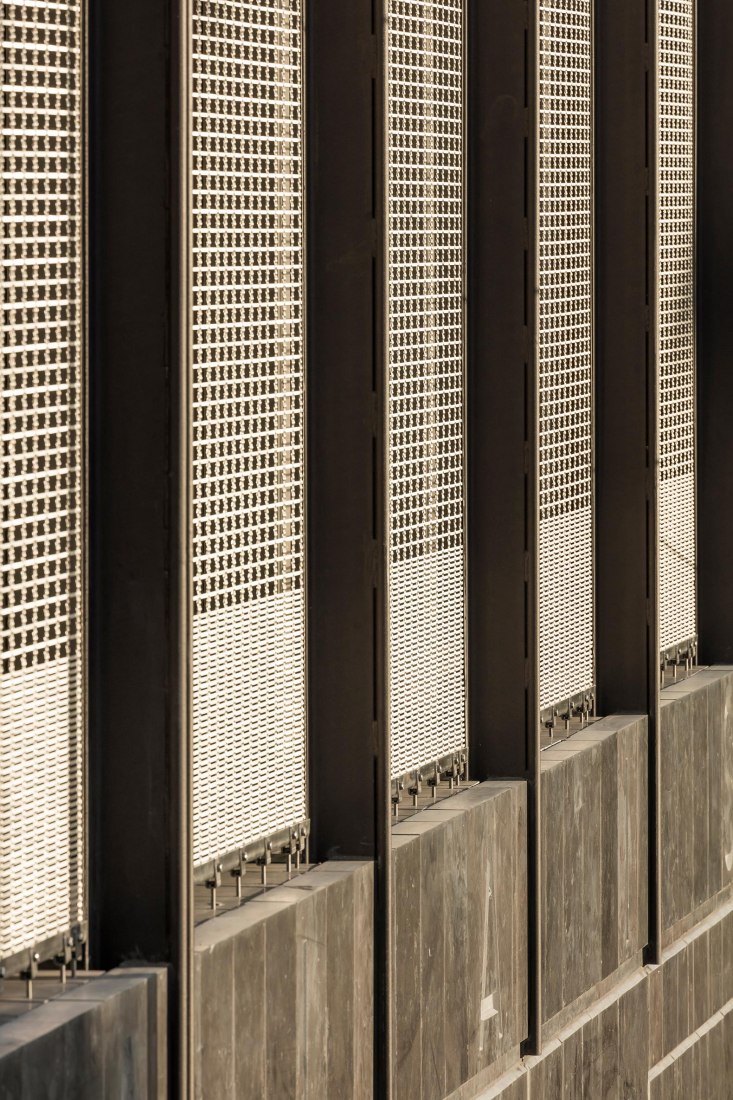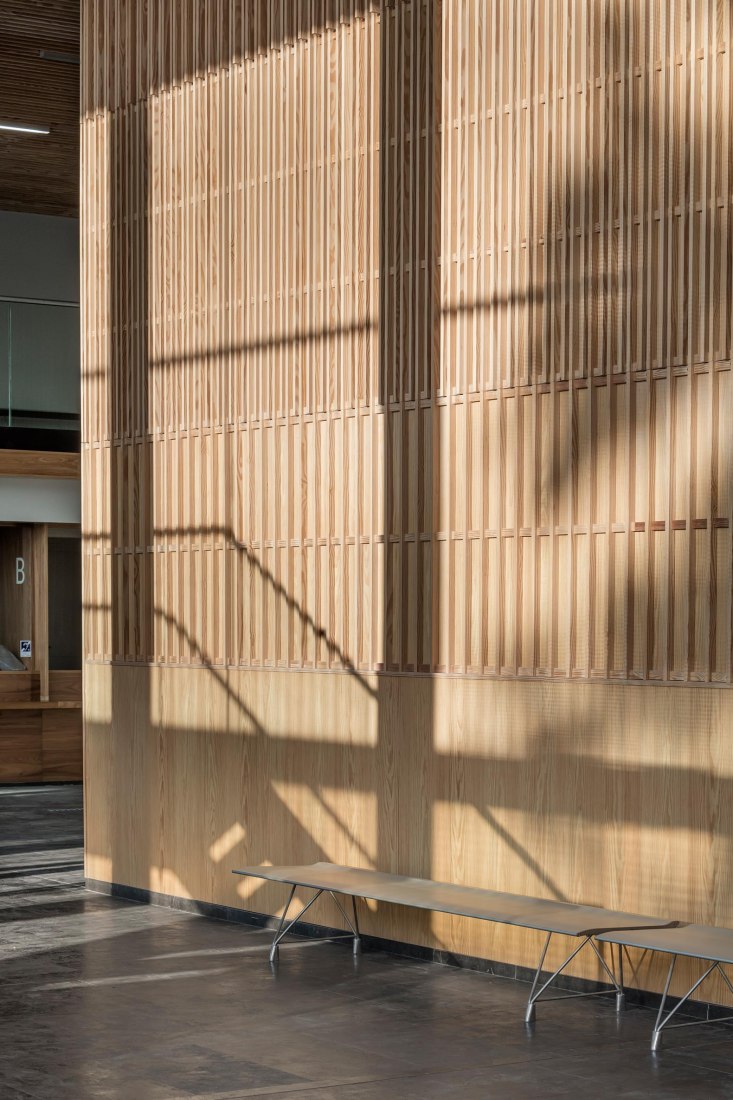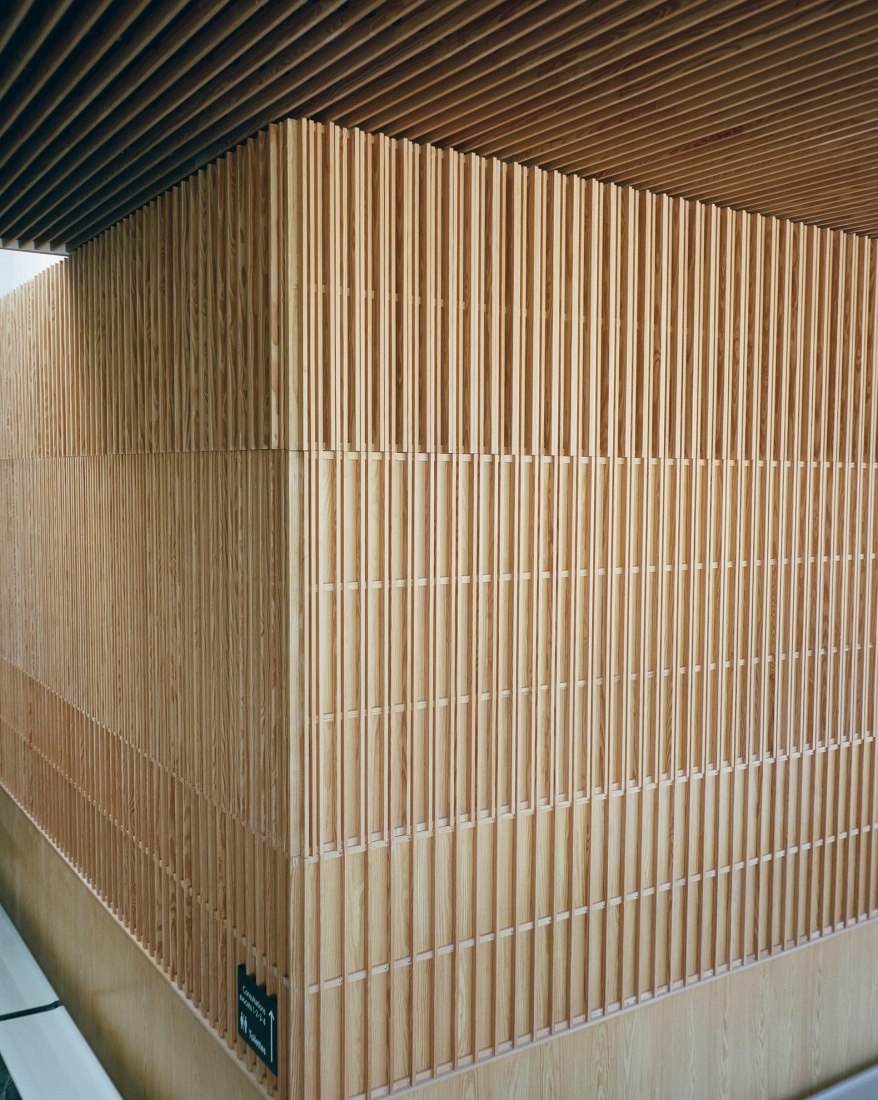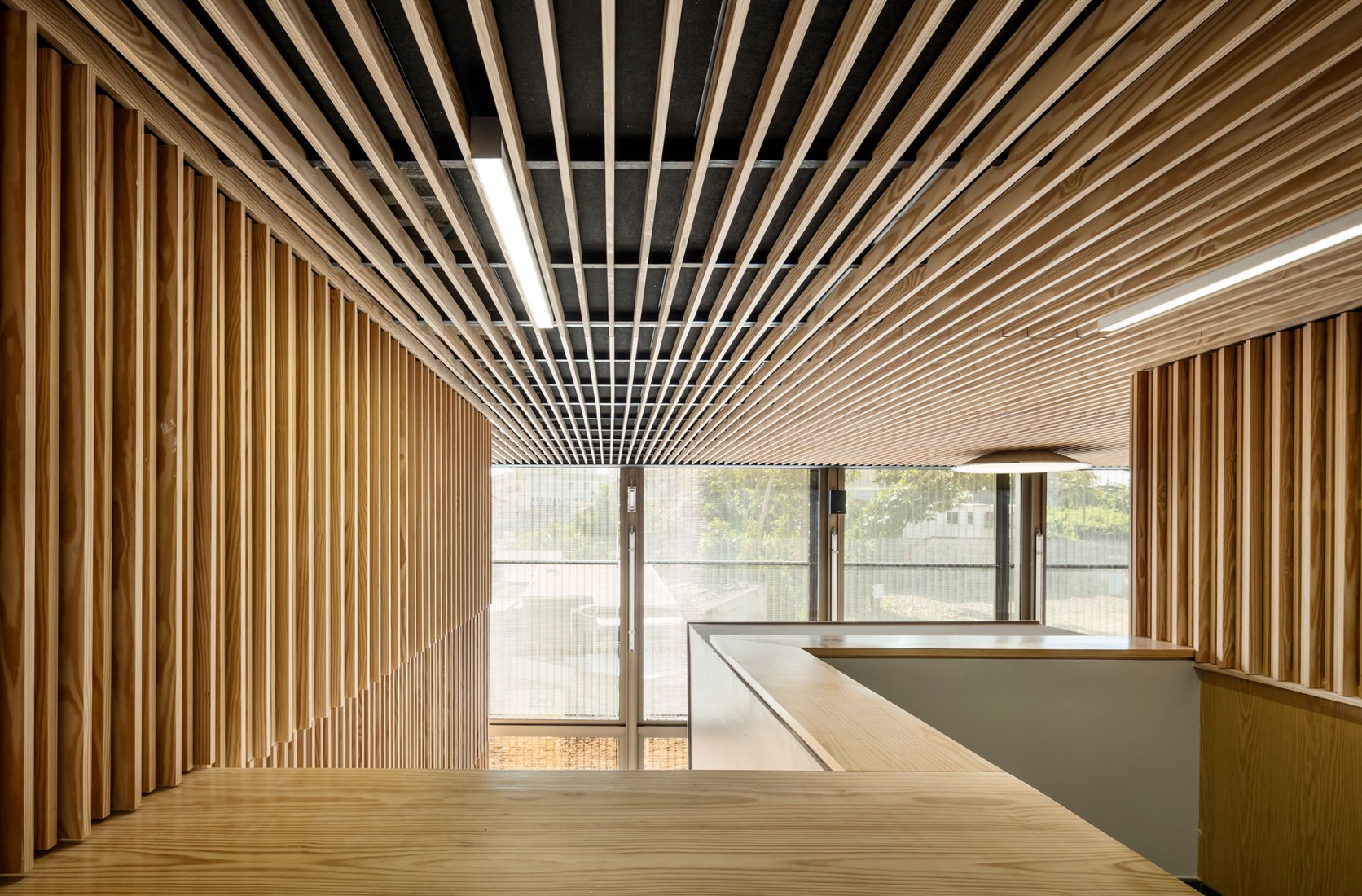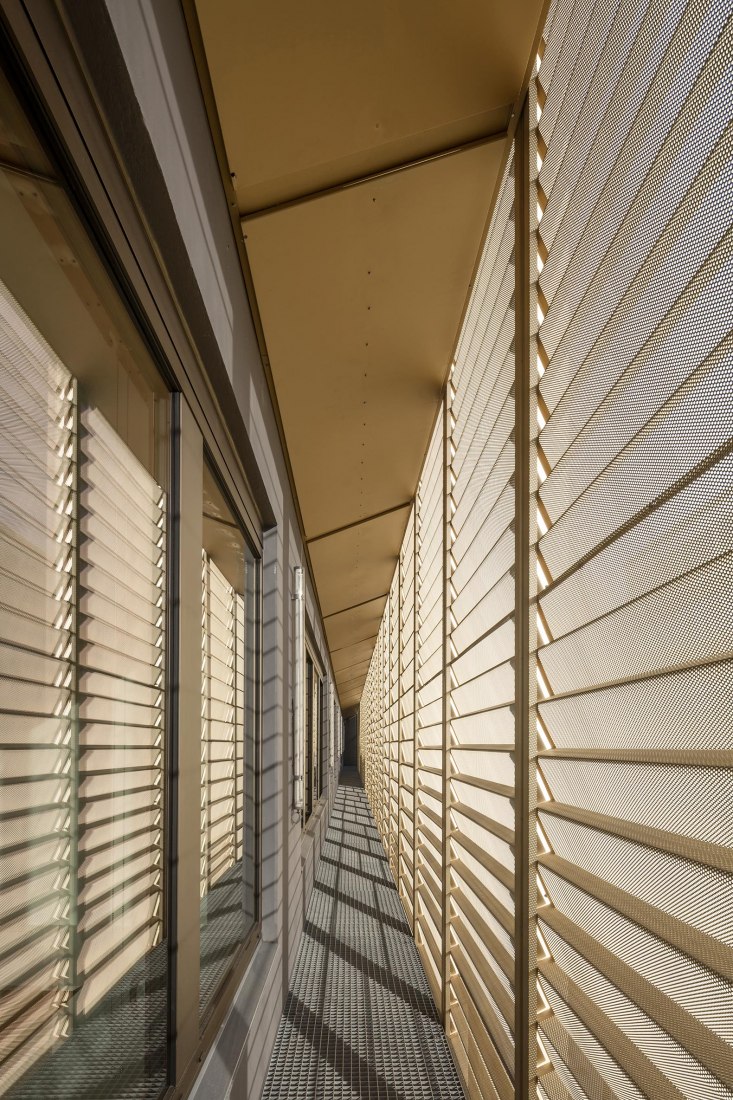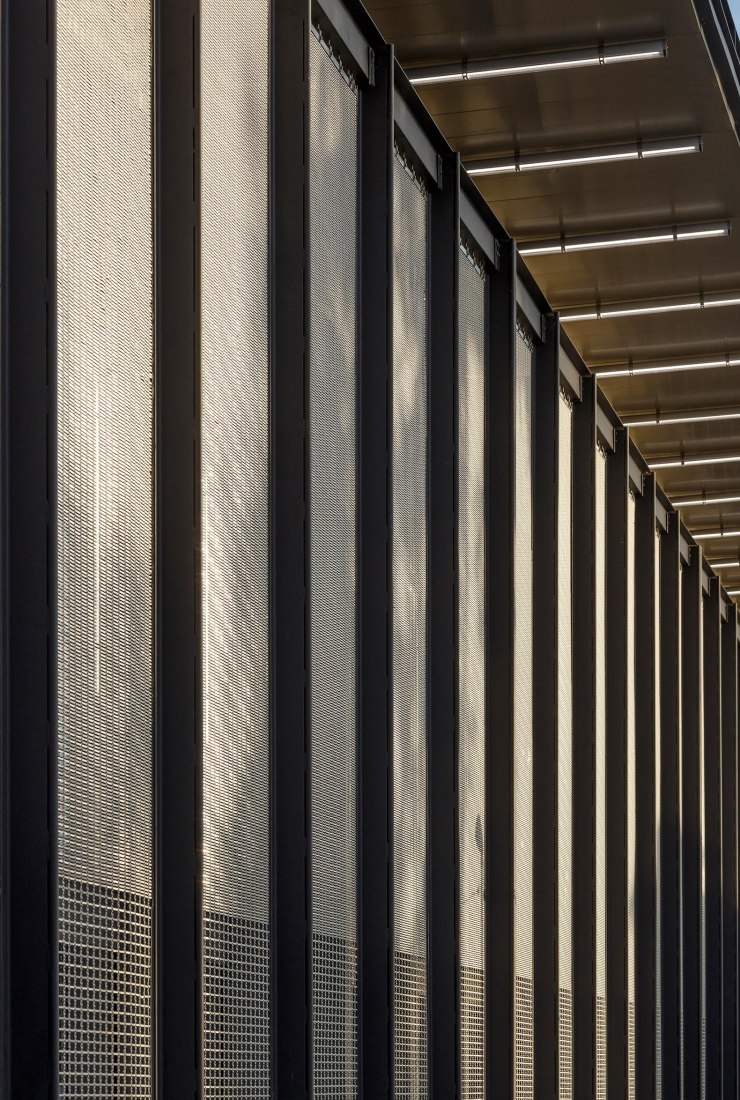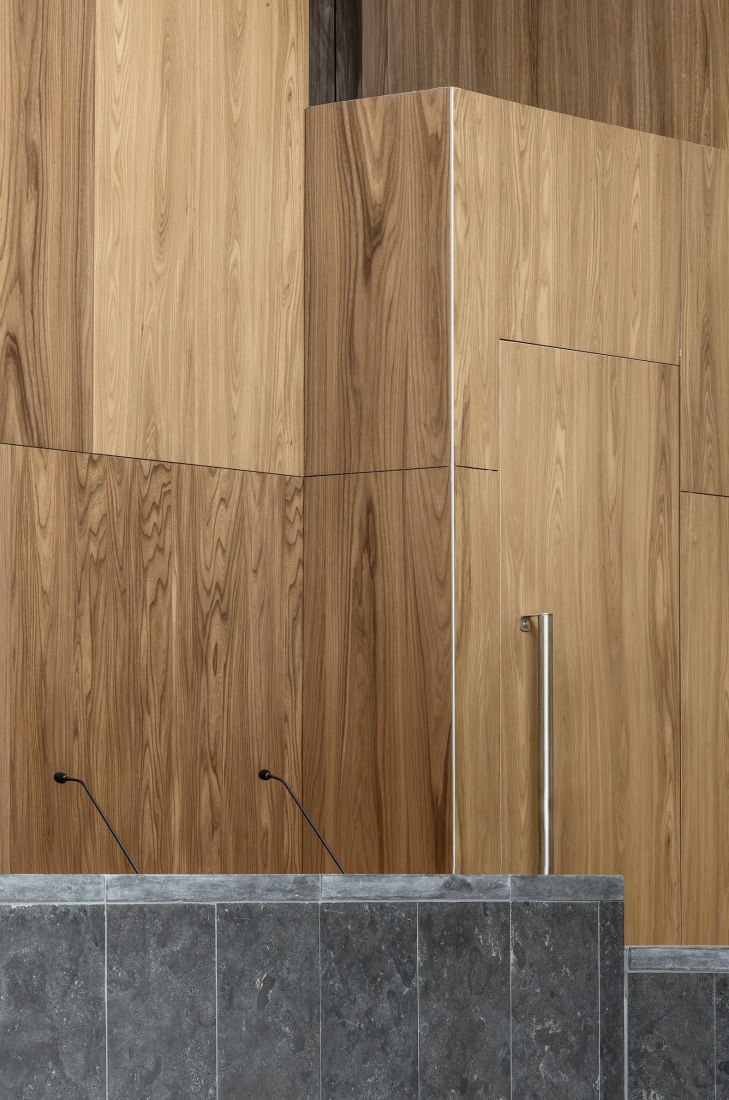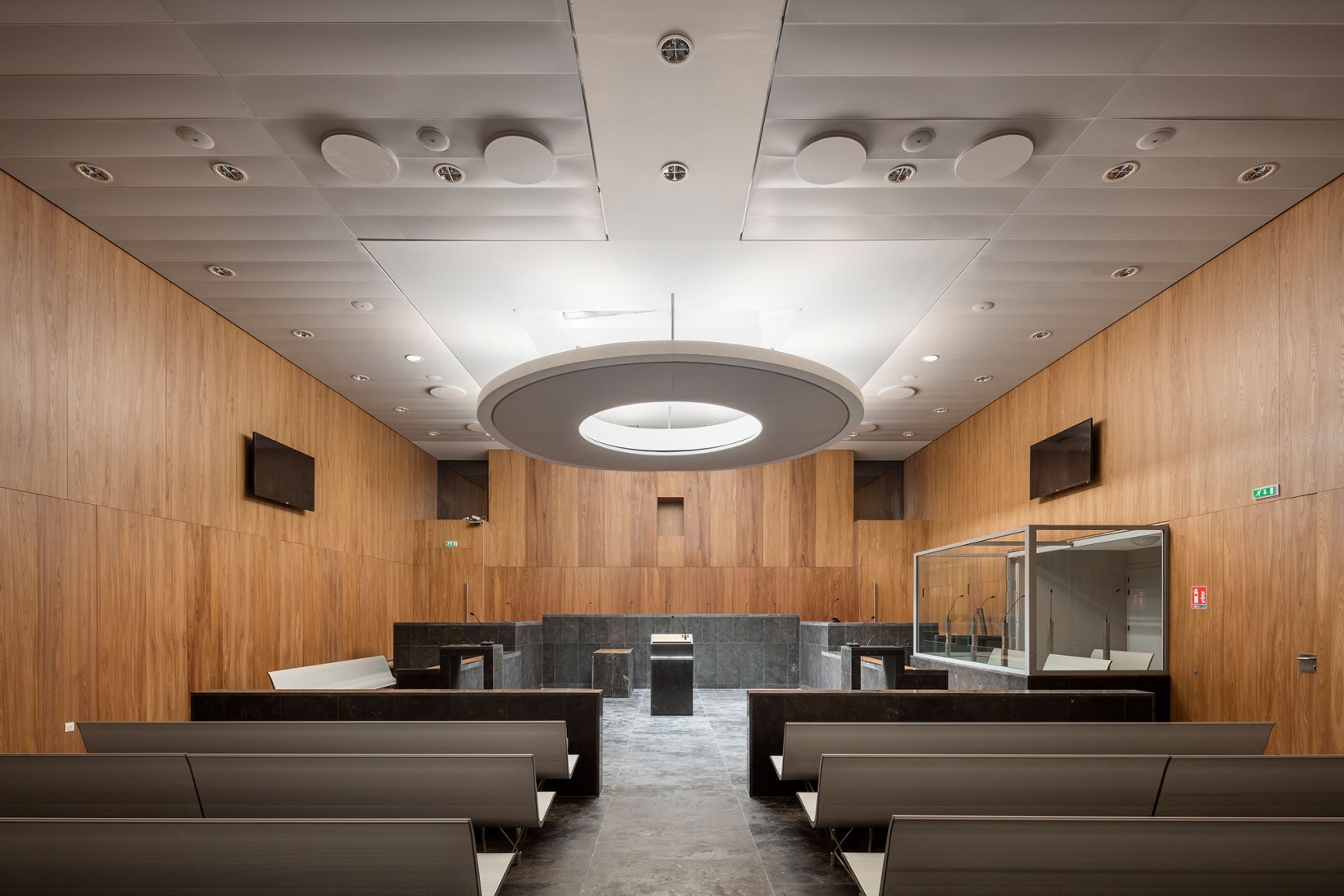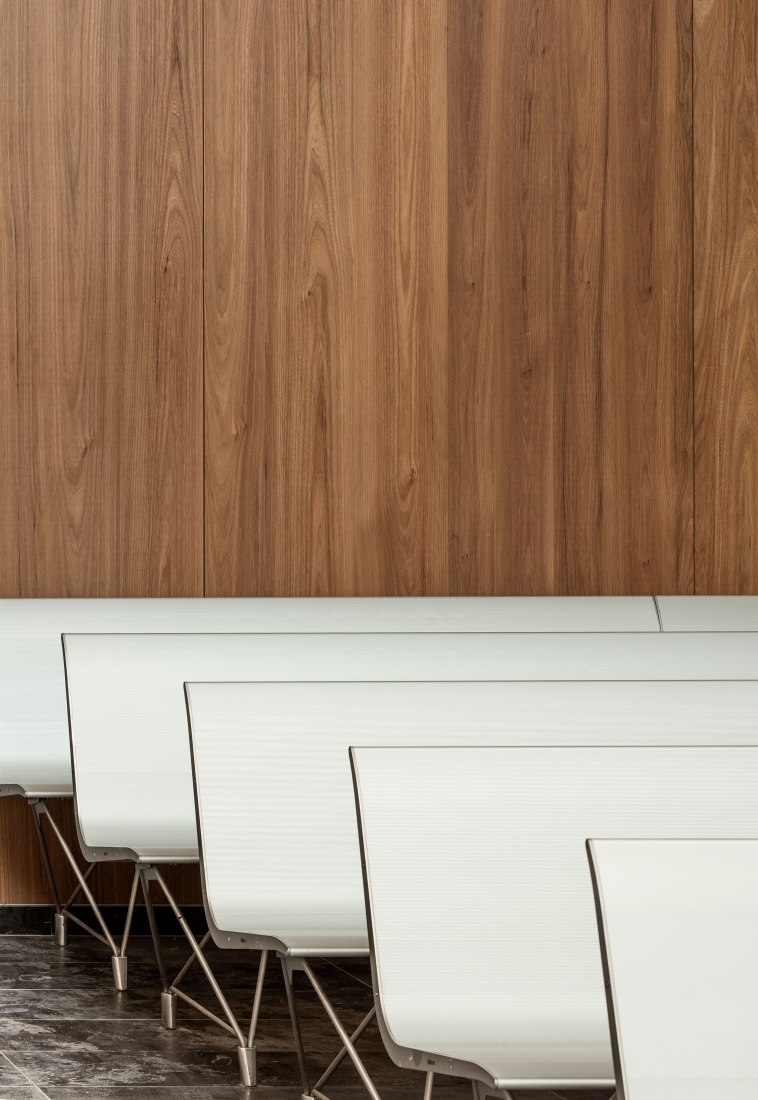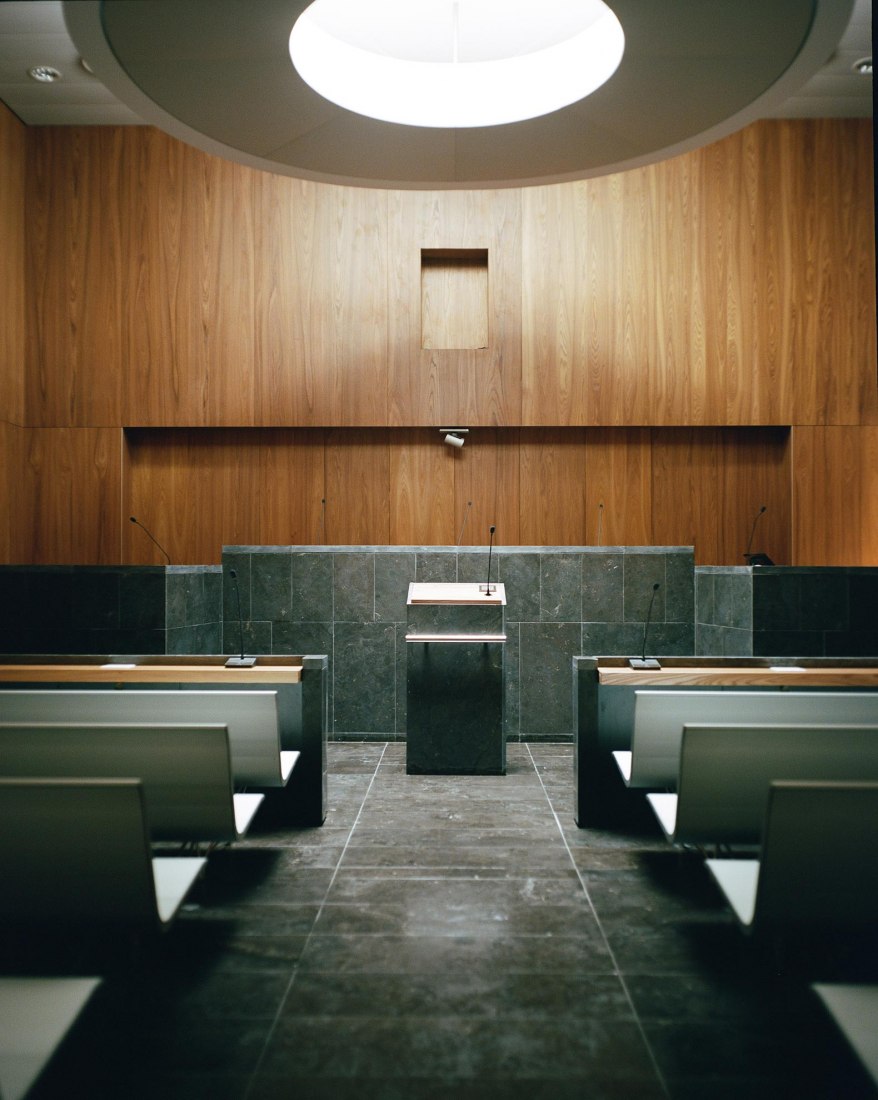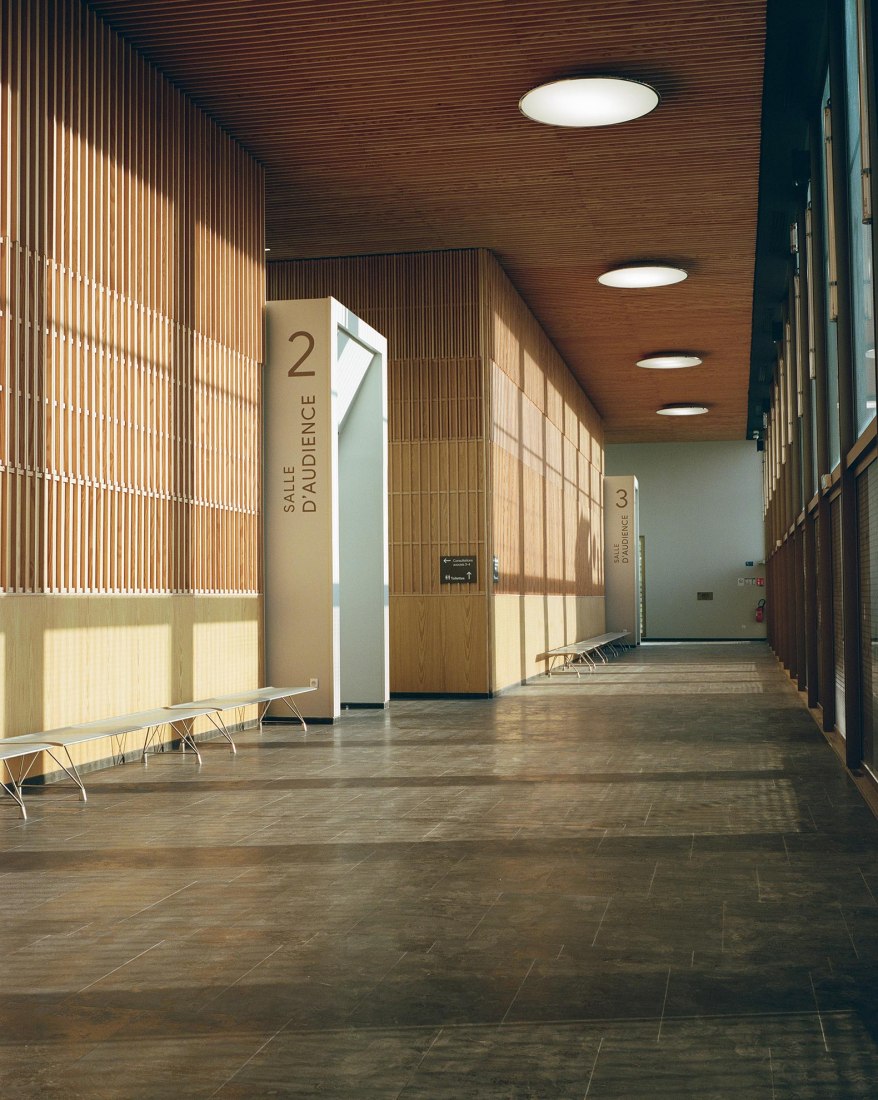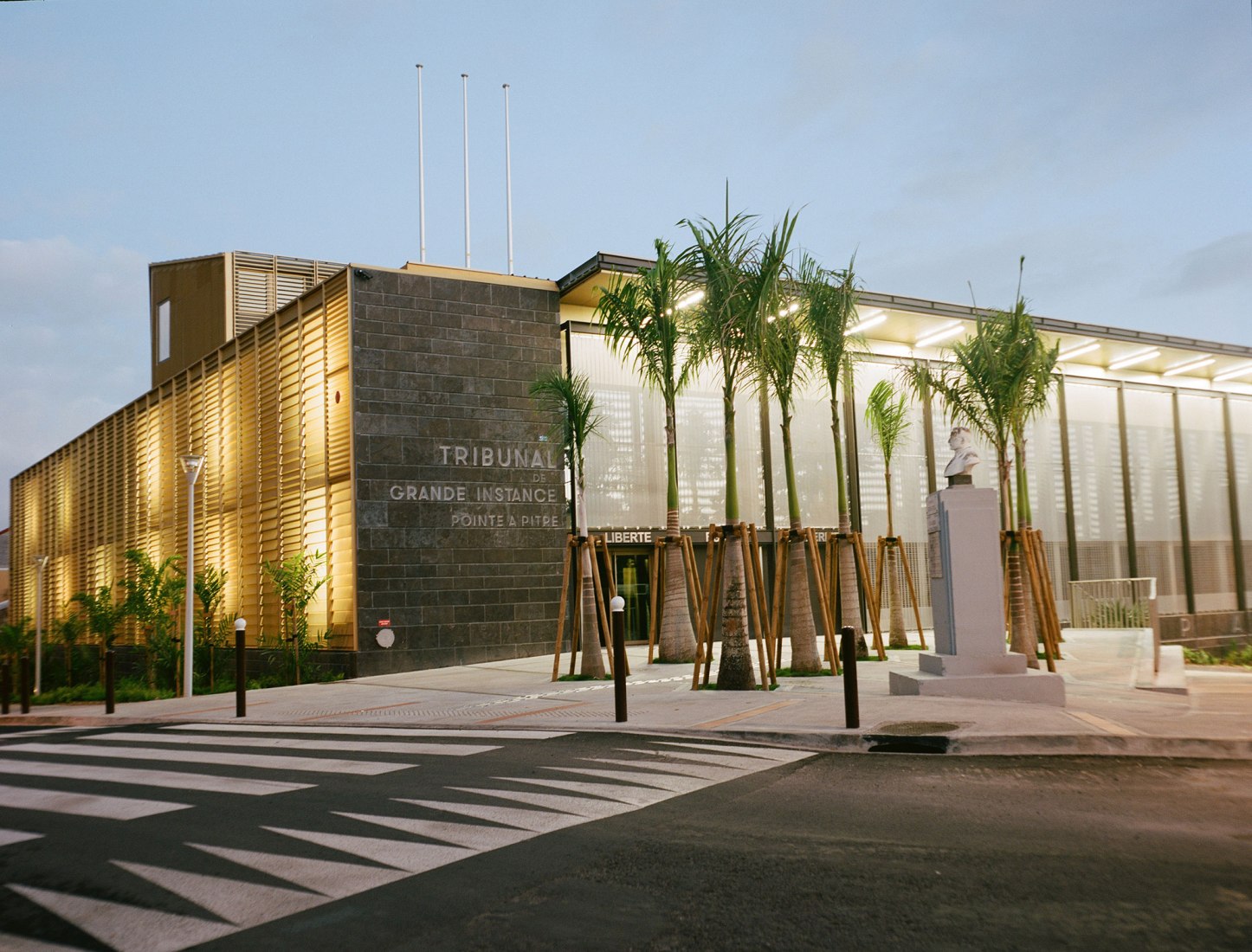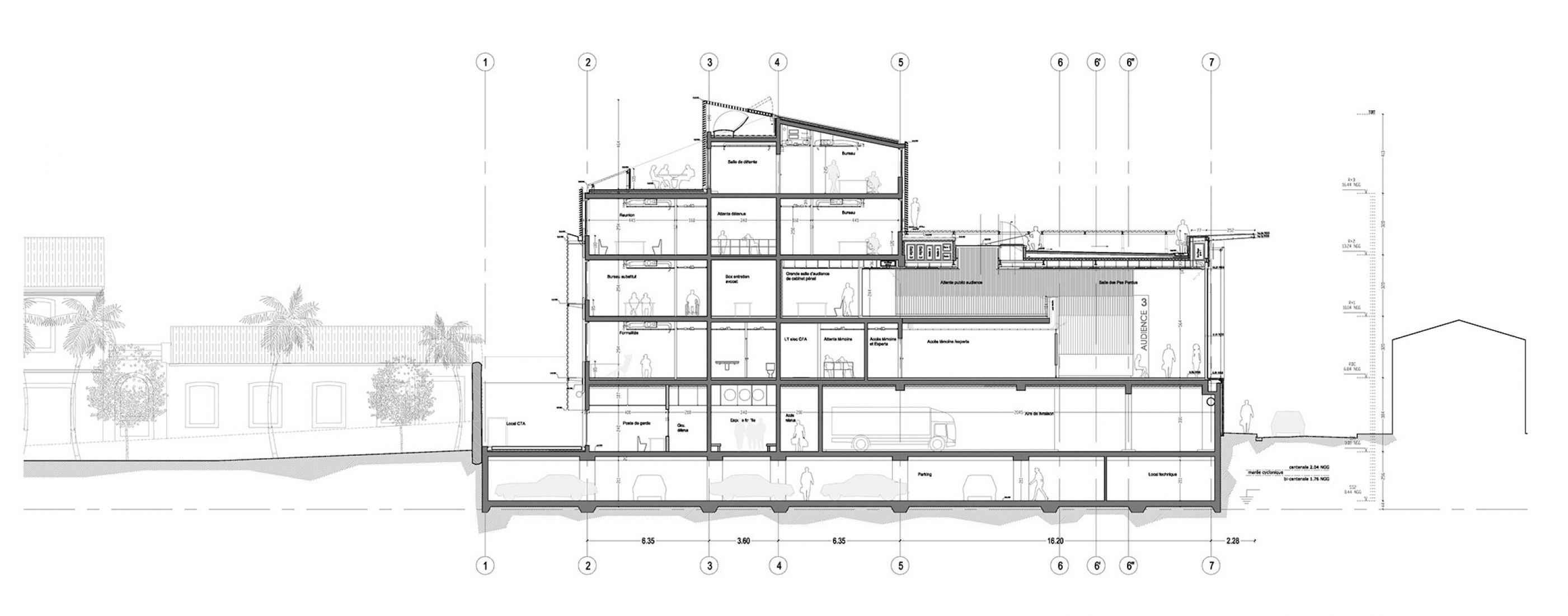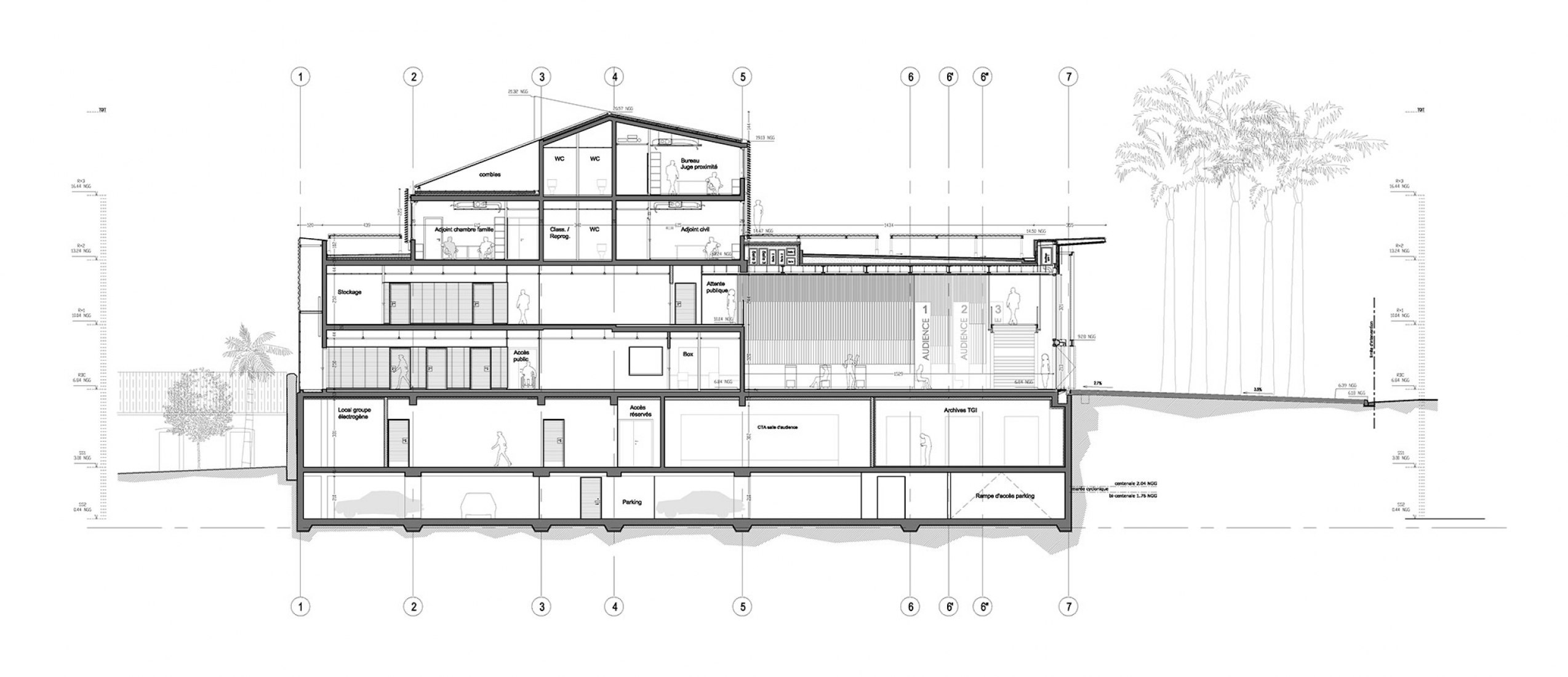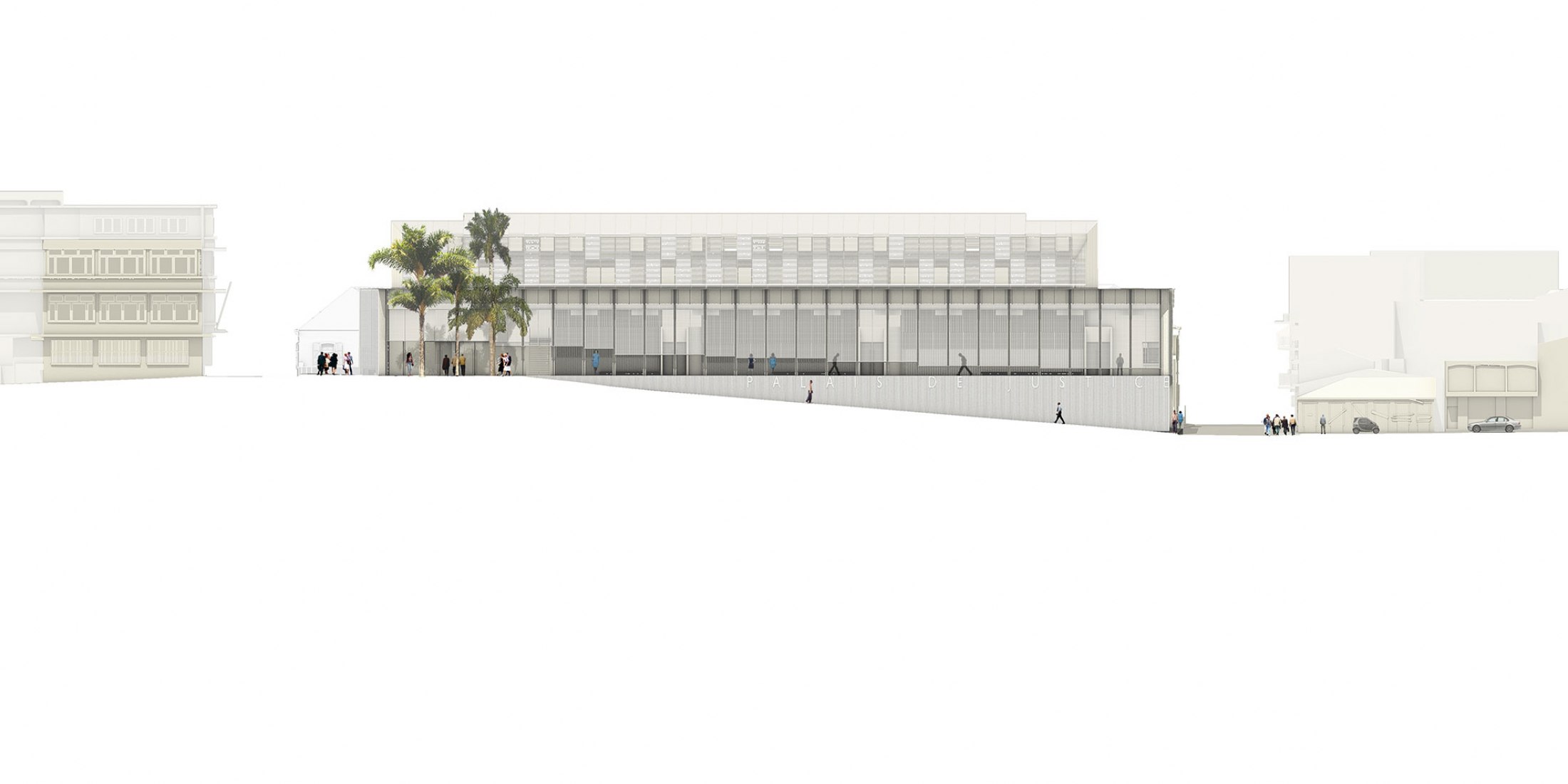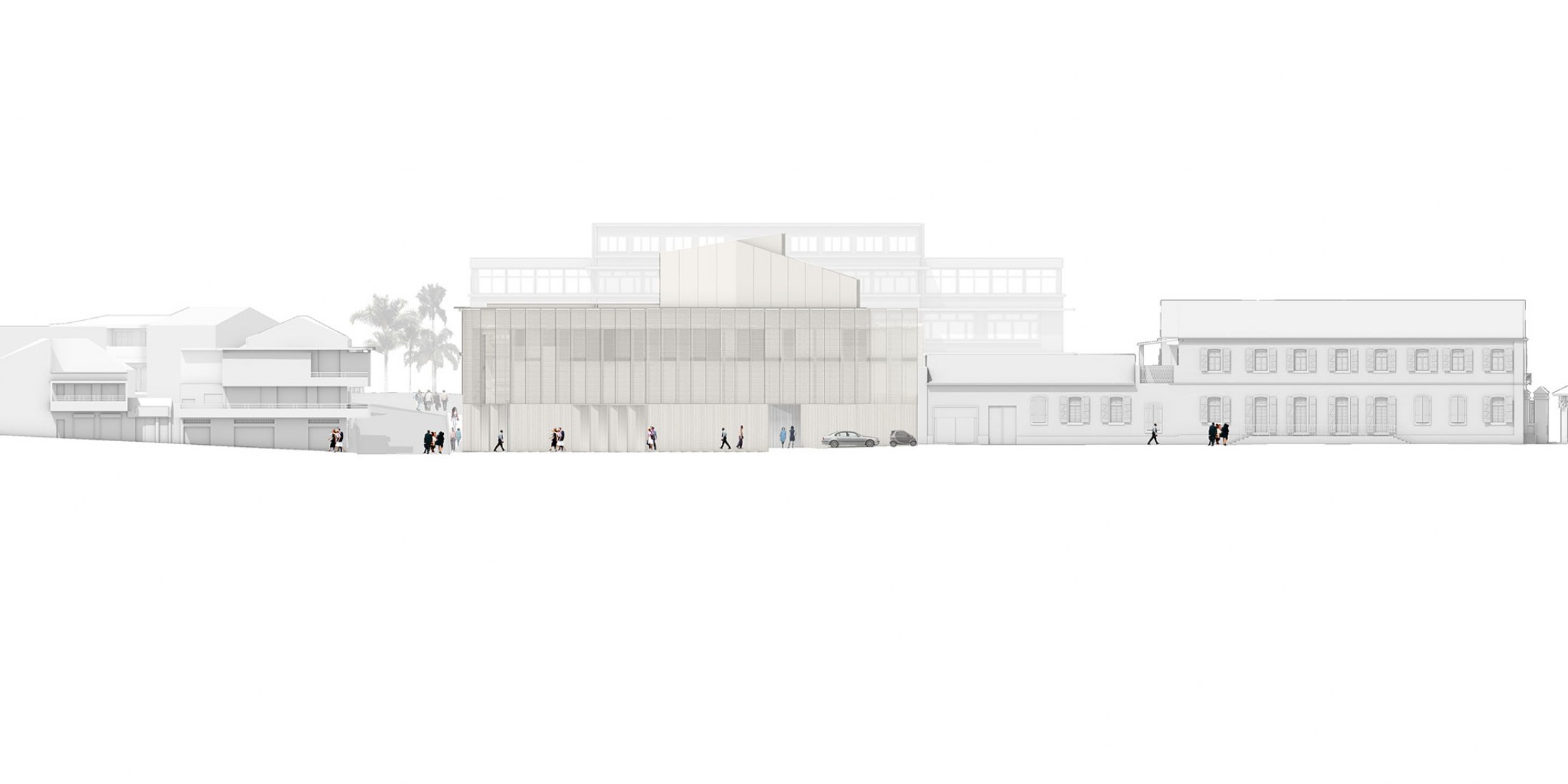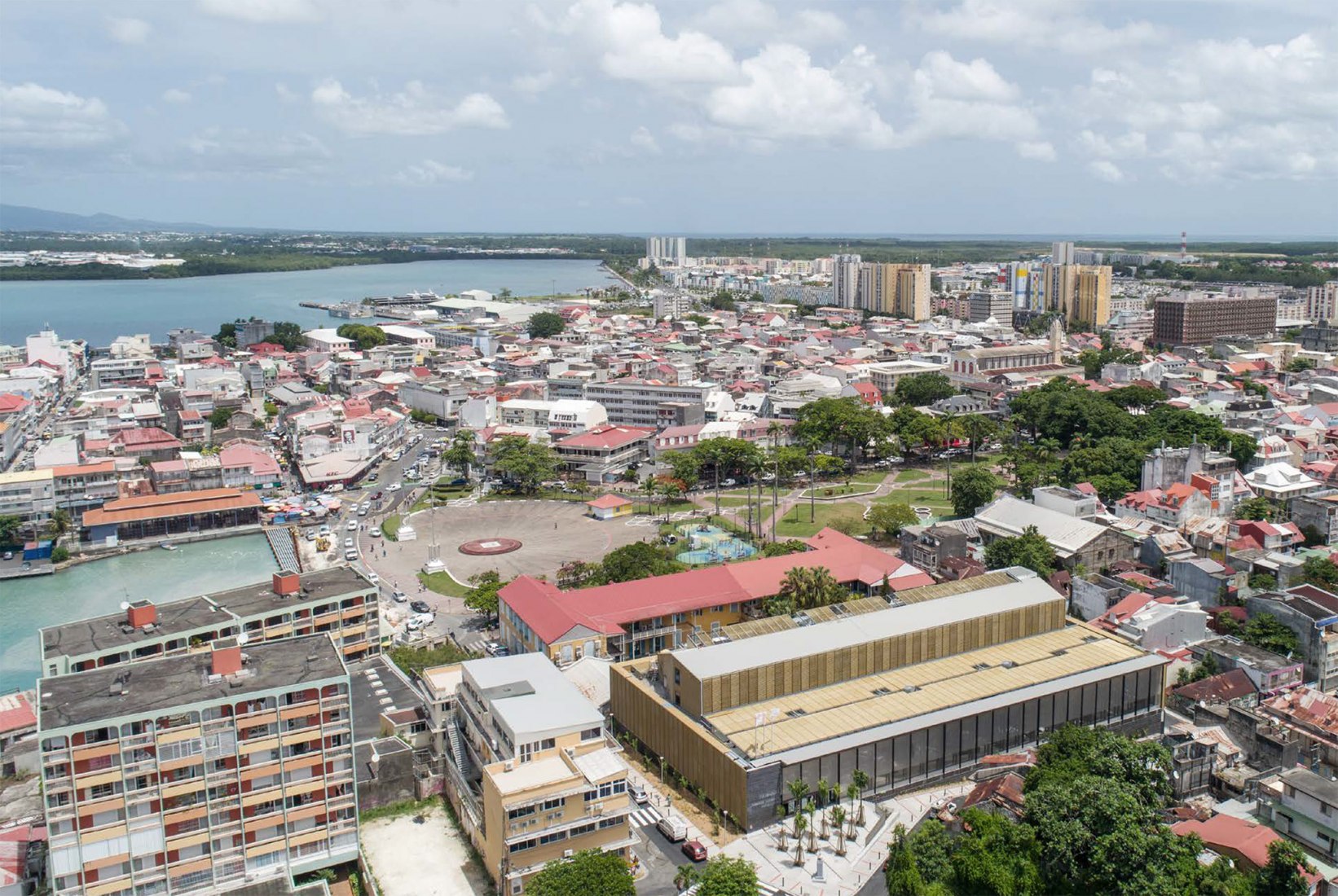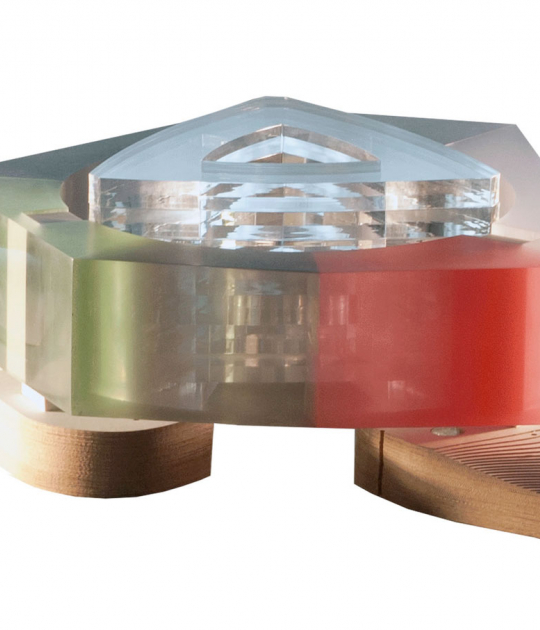Located in the heart of the city, the situation of the building reflects the idea that the exercise of justice must move closer to citizens: “A welcoming and practical building to reconcile citizens with the authority of the judiciary.”
Project description by Ignacio Prego Architectures
Traditionally large and thick as if to express force and power, the walls of the Courthouse in Pointe-à-Pitre evoke openness and transparency. In this way, the building challenges the ice- cold popular image of courts with an apparent warmth, an immediate readability of its forms, and a liberation from the authoritarian codes of judicial architecture.
Built in continuity with the urban fabric and the principal alignments of the city, the Courthouse adapts to its relationship with other buildings in Pointe-à-Pitre.
“Without denying the impetus of their personal vision, the architects precisely articulate their intervention with the pre- existing local culture.”
The colours used in the project come from the chromatic environment of Pointe-à-Pitre and in particular from the Prefecture building that faces it, while the varying light reflecting from the aluminium brise-soleils comes from the sunshine of the Caribbean sky. The feeling of lightness evoked by the building also seeks a proximity with many other buildings in the city, where the finesse of the balconies, colonnades and awnings make for a remarkable sense of identity.
«Open to the city, dis- playing the transparency of its function, embodied by three courtrooms that can be seen from the street, the Courthouse reveals itself to the gaze, without being fully naked. The modesty of the judi- ciary, associated with its statutory restraint, obliges it to respect more intimate surroundings and to set aside curiosity.»
Dominated by its constructive aspect, translated into a structure that is both soft and strong, a sober and expressive volume, the new Courthouse in Pointe-à-Pitre is intended to be a contemporary reinterpretation of the profound symbolism of the judicial space, one that is necessarily associated with the idea of measure and of equili- brium.
Beyond its volumes and lines, the strength of the architecture owes itself to the choice of materials, through which a certain idea of the building is organically expressed. The ma- terials, thanks to the effects they evoke to the gaze and in terms of physical sensations, express the will to establish a sense of justice that is neither remote nor cold.
Construction principles
Building in Pointe à Pitre is not easy: high-magnitude earthquakes, volcanic eruptions, devastating cyclones and heavy rains threaten the city every day. These risks, combined with the intensity of the sunlight and the corrosive salinity of the sea air, encourage designers to turn to a very specific constructive thinking, especially as the equipment available on the island is very limited.
The building is constructed with a reinforced concrete frame with a rigorous geometry that ensures a perfect continuity of the roof with the infrastructure, to ensure the transfer of seismic stresses to the foundations. The plan is structured by a spine that houses the vertical distributions (dedicated to the public, magistrates, detainees and prisoners) and fluid pathways. This framework is completed by a metal framework covering the large public spaces: courtrooms and public lobby.
The façades ensuring the envelope are load-bearing in order to contribute to the bracing. Composed of reinforced concrete alternating with aluminium window frames forming a tunnel, they meet the building’s fundamental objectives: robustness, waterproofing, and modularity, in order to ensure the reversibility of the spaces. A large climatic shade mesh completes the system, providing sun protection for all surfaces of the building (glazing as well as walls and roofs) while offering passive control of the light intensity. This makes it possible to drastically reduce energy consumption. It ensures intimacy for the interior spaces vis-à-vis the busyness of the surrounding streets, because the building cannot benefit from any setback. Finally, it protects the glazed surfaces against shocks in the event of violent cyclones.
The choice of aluminium in an anodised coloured finish for this shade mesh is a technical as well as an aesthetic one. Here, all coloured pigments of plaster, cladding, or bodywork fade quickly due to both the aggressive ultraviolet light and the saline air. Aluminium with an anodised finish was chosen above all for its unalterable chemical nature, combined with the necessary precision of a prefabricated modular implementation.
Environmental Considerations
Heavy rainfall and warm and constant temperatures throughout the year characterise the tropical climate of Pointe-à-Pitre. The near-constant trade winds, high humidity and particularly intense solar radiation were a major challenge in the design of the building.
Meanwhile, the fact that Guadeloupe is an island makes constructions highly dependent in terms of skills and materials on mainland France.
The project’s environmental considerations focused on several key pillars: water, energy, and visual and technical suitability. In the context of the tropical and humid climate of Pointe-à- Pitre, the need to cool the building was an important factor in the design of the Courthouse.
Our intention was to propose sustainable solutions requiring maintenance operations that are controlled and minimized by implementing the concept of bioclimatic architecture in a tropical environment. This is achieved by using essentially passive systems, in conjunction with high-quality and finely adjustable energy devices.
As a whole, this approach finds its principal expression in the full deployment on all “five façades” of a shade mesh that creates a naturally ventilated plenum.
Optimisation and simplicity of design are tools for the agency’s commitment to the issue of moderating energy use. This attention is focused both on the short term, by limiting the building’s needs and consumption of energy, and associated with a long-term vision by addressing future questions of maintenance of the Courthouse and its facilities.


